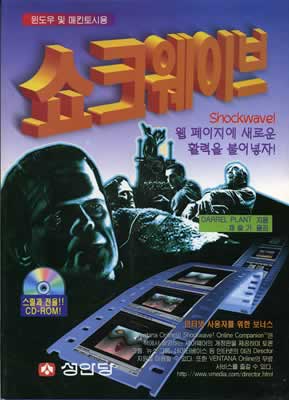Ten years ago today, 31 December 1995, I was working in my office on a Sunday night, printing up invoices and closing out accounts for the end of the first year I’d gone out into the world as a full-time freelancer. I’d been working sporadically with Macromedia Director over the previous couple of years — although my freelance work consisted more of digital image editing and basic Web development. I’d tried to get some business as a digital portfolio programmer with an ad in Step-by-Step Graphics magazine (it was a largely pre-CD-ROM era, and shoehorning material onto diskettes still took some doing) without much success. I’d tried for a couple of jobs in the Portland interactive industry and worked with the International Interactive Communications Society’s Portland chapter as a newsletter editor and officer. At the end of the summer, just as I went out on my own, I lucked into a part-time job teaching Director for Portland State University’s School of Extended Studies.
In March 1995, I’d set up my own web server in my office on a Mac Quadra 630 with a 200MB external hard drive, over a dedicated phone line and a 14.4k modem. At the time, it was the least expensive way I could find to have my own domain name and control over the server, which gave me the latitude to run hideously expensive database add-ons to the shareware MacHTTP software. Still I had my own domain and the ability to create simple web applications at a time when a lot of the businesses I was dealing with didn’t.
I’d been following the development of Shockwave ever since I’d heard about it at the 1995 UCON. I’d almost skipped the show, since I was technically unemployed, but I scraped the money together and made it down to San Francisco where I joined a standing-room-only crowd at one of the public demonstrations. Rather than set up a listserv, Macromedia created a form page which was essentially like a blog comment form, where each new message is posted to the end of the page, followed by the form itself. By the end of the year, it had grown to a couple of hundred kbytes — not an inconsiderable amount given that most everyone was surfing at 28.8k or worse. I’d been checking it for news and info regularly.
Then, on New Year’s Eve, while everyone else was presumably doing something entertaining with their time, I saw a post from a literary agent, looking for a writer to take on a book on Shockwave. I’d never written anything nearly as long as a book — I’ve joked for years that my undergraduate thesis was the shortest on record in my alma mater’s English department, but it’s probably true; I’d never worked on a major project in Director; at the time, the Mac version of the Shockwave Player hadn’t been released yet, and I had to go 20 miles just to see any Shockwave pieces I created with the beta version of the Afterburner, because most of the people I knew from the print business used Macs and they were the only people with Internet connections, to boot. Still, I answered the ad.
In just over two weeks I had a contract with the long-defunct Ventana press. I finished the book (Shockwave: Breathe New Life into Your Web Pages) in ten weeks, missing out on a bonus that equalled a third of the money I got because I didn’t make it in eight. A little over 300 pages of my own material (the folks at Ventana rounded up some samples for another 20 pages), plus sample files, tutorials, and screenshots. And, of course, I had to learn Shockwave while I was doing it. Nevertheless, it was my entree into Director notoriety.
It was the only book I wrote that I ever made a profit on (and no, I had nothing to do with the cover designs).

